How to Properly Charge a Deep Cycle Battery
When it comes to using deep cycle batteries, proper charging is crucial to ensuring longevity and peak performance. Knowing how to charge battery systems correctly can not only enhance battery life but also prevent potential hazards. In this article, we will explore essential steps and tips to charge battery effectively, avoid common mistakes, and optimize your battery usage.
- Understanding Deep Cycle Batteries
- Why Proper Charging Matters
- How to Charge Battery: Steps for Optimal Performance
- Charge Battery in Stages for Maximum Efficiency
- Common Mistakes to Avoid When Charging a Deep Cycle Battery
- How to Charge Battery for Maximum Longevity
Understanding Deep Cycle Batteries
Before we delve into the specifics of how to charge battery systems, it’s essential to understand what deep cycle batteries are. Unlike standard car batteries, which provide a short, high burst of energy, deep cycle batteries are designed to provide a steady amount of power over a long period. They are often used in applications like solar power systems, RVs, marine vehicles, and off-grid energy storage.
These batteries are constructed to handle deep discharges, meaning they can be used to a significant extent before requiring a recharge. However, improper charging can result in reduced capacity and lifespan, which is why knowing how to charge battery systems properly is key.
>>See also Understanding The Lifespan Of Group 27 Deep Cycle Batteries
Why Proper Charging Matters
Charging your deep cycle battery the right way can:
- Increase the battery's lifespan: Overcharging or undercharging can reduce the number of charge cycles, leading to early battery failure.
- Maximize efficiency: Proper charging ensures the battery performs at its best, providing consistent power for your devices or vehicles.
- Prevent hazards: Incorrect charging can lead to battery overheating, leakage, and in extreme cases, explosions.
Now, let's look into the detailed steps to charge battery systems effectively.
How to Charge Battery: Steps for Optimal Performance
Charging a deep cycle battery may seem straightforward, but there are several factors to consider in order to get the best results. Here are the critical steps to follow:
Step 1: Choose the Right Charger
The first step in how to charge battery systems correctly is to use the appropriate charger. Deep cycle batteries require a charger designed specifically for their chemistry (such as lead-acid, lithium-ion, or AGM). Using an incorrect charger can lead to overcharging, undercharging, or even damaging the battery. Look for chargers with adjustable settings for voltage and current to match the battery specifications.
Step 2: Check the Battery Voltage
Before charging, always check the voltage of your deep cycle battery. You can do this with a multimeter. The voltage will tell you whether the battery is in need of a recharge or if it is already charged. If the voltage is below the recommended level, it’s time to charge.
For a 12V battery, a fully charged battery should read around 12.6V. If it reads below 11.8V, it’s time to begin the charging process.
Step 3: Clean the Battery Terminals
One of the most overlooked steps when learning how to charge battery systems is ensuring that the battery terminals are clean. Dirt, corrosion, and grime can prevent the charger from making a good connection, leading to inefficiencies during charging. Always clean the battery terminals with a mixture of baking soda and water to remove any buildup before you start the charging process.
Step 4: Connect the Charger
Now, it's time to connect the charger. Follow these steps carefully to avoid any accidents:
- Turn off the charger: Before making any connections, ensure the charger is off.
- Connect the positive (red) cable: Attach the positive cable to the positive terminal of the battery.
- Connect the negative (black) cable: Attach the negative cable to the negative terminal of the battery. If you're charging in a vehicle, it's best to connect the negative cable to a grounded metal part away from the battery to prevent sparks.
Step 5: Start the Charging Process
Once everything is connected, turn on the charger. The charger will regulate the current and voltage, ensuring the battery charges safely and effectively. Some chargers have an automatic shut-off feature when the battery reaches a full charge, while others may require you to monitor the charging process manually.
Step 6: Monitor the Charging Process
During charging, it’s important to monitor the process, especially if you're using a manual charger. Deep cycle batteries should be charged slowly and evenly, typically over several hours. Quick charging can lead to excessive heat buildup, damaging the battery.
It’s advisable to check the battery periodically to ensure it’s not overheating. If the battery begins to get too hot, turn off the charger and allow it to cool down before resuming the process.
Charge Battery in Stages for Maximum Efficiency
Another key point to remember when learning how to charge battery systems is to charge in stages. Most deep cycle batteries benefit from a three-stage charging process:
- Bulk charge: This is the initial stage where the battery receives the majority of its charge. The charger applies a constant current to the battery, bringing the voltage up.
- Absorption charge: Once the battery reaches about 80% of its capacity, the charger switches to this stage. The charger reduces the current while maintaining the voltage, allowing the battery to fully charge without overcharging.
- Float charge: In this final stage, the charger maintains a small charge to keep the battery at full capacity. This stage is particularly important for batteries used in systems that are always connected, like solar panels or off-grid setups.
By following the three-stage charging process, you can ensure the battery is properly charged without overtaxing its capacity.
Common Mistakes to Avoid When Charging a Deep Cycle Battery
Even though it’s relatively simple to charge battery systems, some common mistakes can still cause damage. Here are a few errors to avoid:
1. Overcharging
Overcharging is one of the most common mistakes people make when charging deep cycle batteries. Overcharging can cause the battery’s electrolyte to evaporate, leading to a loss of capacity and potential damage. Always use a charger that’s specifically designed for deep cycle batteries, as it will have automatic shut-off features to prevent overcharging.
2. Undercharging
On the flip side, undercharging is also problematic. Deep cycle batteries should not be left in a discharged state for long periods, as it can lead to sulfation (the buildup of lead sulfate on the battery plates), which reduces the battery's overall efficiency. Charge your battery before it drops below 50% of its full capacity.
3. Charging in Extreme Temperatures
Charging a deep cycle battery in temperatures that are too hot or too cold can cause irreversible damage. Ideally, the temperature should be between 50°F (10°C) and 77°F (25°C). Extreme cold can prevent the battery from accepting a charge, while extreme heat can accelerate the degradation of the internal components.
4. Using the Wrong Charger
As previously mentioned, using a charger that’s not suited for your battery type can cause a host of problems. For example, a charger designed for a regular car battery may not be suitable for a deep cycle battery, as it could provide too much current or incorrect voltage.
>>See also RV Electricity Basics A Guide To Run Your RV For Beginner And Master
How to Charge Battery for Maximum Longevity
To maximize the lifespan of your deep cycle battery, follow these additional tips:
- Avoid deep discharges: Try to keep your battery’s charge level above 20% whenever possible. Discharging a battery completely can shorten its life.
- Use a quality battery monitor: A battery monitor can help you keep track of the state of charge and ensure you're charging the battery at the optimal time.
- Equalize the battery: Periodically, deep cycle batteries may require equalization, which is a controlled overcharge used to balance the voltage across all battery cells. This process helps to prevent sulfation and extends battery life.
In conclusion, knowing how to charge battery systems is an essential skill for anyone who relies on deep cycle batteries for power. By following the proper charging steps, using the correct charger, and avoiding common mistakes, you can significantly enhance the performance and lifespan of your deep cycle battery.
Remember to regularly monitor the charging process, and be sure to avoid overcharging, undercharging, and charging in extreme temperatures. By doing so, you'll ensure that your battery is always ready to provide reliable and efficient power.
Proper charging is crucial not just for the performance but for the safety of your deep cycle battery. Charge battery systems correctly, and you'll enjoy long-lasting, high-performance power for years to come.

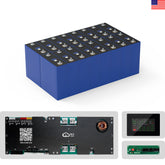

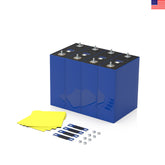
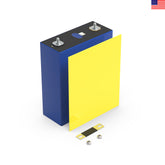
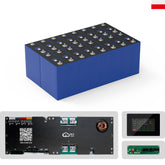

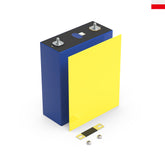

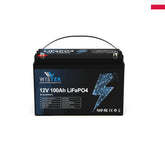
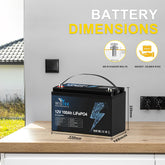
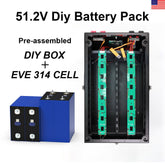


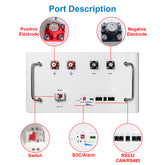
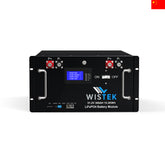
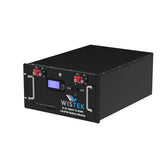


Leave a comment
All blog comments are checked prior to publishing